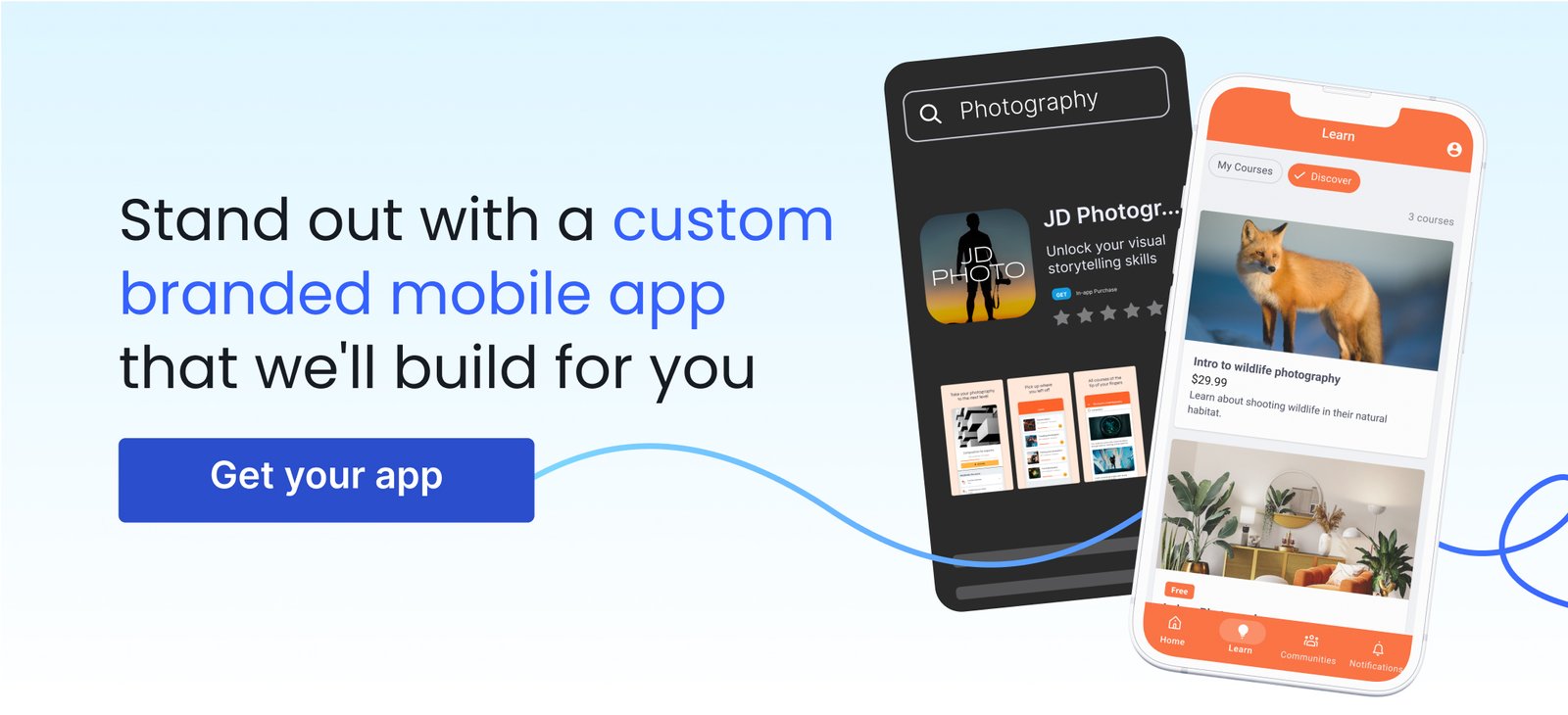Today’s business environment is not solely about selling great products or services.
More than ever, it’s the experience that justifies a customer’s investment. People want convenience, engagement, and support if they are to part with their hard-earned money.
According to a study by SalesForce, 80% of customers believe the experience a company provides is just as important as its products or services. This statistic underscores the significance of customer engagement in today’s competitive marketplace.
Without effective strategies to bolster customer engagement, companies are missing out on brand loyalty opportunities and making it much harder to retain customers long-term.
- Effective Customer Engagement Strategies
- Measuring Customer Engagement
- Utilizing Technology to Enhance Customer Engagement
- Tips for Continuous Improvement of Customer Engagement Strategies
- Conclusion
- Frequently Asked Questions
Effective Customer Engagement Strategies
The traditional single-channel communication approach is no longer sufficient. Businesses must innovate and implement tailored engagement strategies to captivate customers and foster loyalty.
These techniques can contribute to forging a stronger bond with customers, increasing their engagement, and ultimately improving the bottom line. Let’s dive in and understand how they can be utilized effectively.
Online Learning Programs and Courses:
In the evolving digital landscape, Online Learning Programs and Courses have emerged as customer engagement tools. When brands offer educational content, they foster a deeper connection by empowering their users with knowledge and skills. These programs can solidify a brand’s position as an industry leader, enhance the perceived value of its offerings, and create opportunities for consistent, meaningful interactions.
Moreover, the communal aspect of online learning—where users can discuss, collaborate, and share—promotes a sense of community, driving longer and more frequent touchpoints with the brand.
Indicators that Online Learning might be a suitable strategy for your business:
- Existing Expertise: Your business has in-depth knowledge or a unique approach to topics of interest to your target audience.
- Recurring Customer Queries: Regular inquiries or confusion about aspects of your product/service which can be addressed through educational content.
- Community Engagement: Your audience is active, engaged, and seeks interaction, either with the brand or among themselves.
- Value-Added Services: Your business model thrives not just on selling a product but also on providing ongoing value and support.
- Industry Evolution: You operate in a rapidly changing industry where continuous education can benefit users.
Personalization
Personalization involves using customer data to provide tailored experiences. This goes beyond addressing customers by their names.
It includes understanding their preferences, purchase history, and behavior to present them with pertinent content or offers. Marketers can invest in CRM tools that offer robust data collection and analysis to empower such personalization.
Research shows personalized marketing efforts, such as individualized emails or website experiences, can significantly boost customer engagement and conversion rates. These strategies make customers feel heard and understood, fostering a stronger connection with the brand.
Omnichannel Approach
An omnichannel approach refers to integrating online and offline channels to create a unified customer experience.
For instance, a customer might browse products on your website, ask questions on social media, and finally purchase in your physical store.
The customer journey weaves through multiple channels before a sale, meaning a seamless and consistent experience across all platforms is critical. Businesses must strive to recognize each customer, understand their past interactions, and offer them consistent service, irrespective of the channel they are using.
Social Media Engagement
Social media has become a potent tool for businesses to connect with customers. Brands can use these platforms to share updates, address customer queries or complaints, and engage users with interactive content.
Some best practices for social media customer engagement could include:
- Being responsive to messages and comments
- Regularly posting engaging and relevant content
- Going beyond promotional content to form a genuine connection with the audience
Today’s customers appreciate transparency and authenticity, and social media provides an ideal platform for brands to showcase these values.
Proactive Customer Support
Timely and efficient customer service is a cornerstone of strong customer engagement. No one wants to wait around for a problem to be solved. Modern businesses can enhance this by adopting a proactive approach.
This means anticipating customer issues and offering solutions before they become a significant concern. Try things like:
- Maintaining a comprehensive FAQ page
- Sending out preventive maintenance reminders
- Notifying customers about potential issues and their solutions
Different channels like email, live chat, social media, and phone could be used for this proactive communication, depending on how customers prefer to be contacted. A proactive approach helps increase customer satisfaction and trust, fostering deeper engagement.
Gamification
Gamification refers to the application of game elements in non-game contexts. In terms of customer engagement, this could include introducing points systems, badges, leaderboards, challenges, and rewards in your engagement strategy.
For instance, a cafe might offer a free drink after a customer buys a certain number of coffees, or a retail app might unlock special discounts for users who check in daily.
Gamification leverages human psychology to make engagement fun, motivating, and rewarding. Businesses like Starbucks, Nike, and Duolingo have seen immense success with gamification in enhancing customer engagement and loyalty.
Measuring Customer Engagement
Understanding the impact of your customer engagement strategies is vital to their continued success and improvement. This entails a two-fold approach:
Identifying Key Performance Indicators (KPIs)
Firstly, businesses must determine what Key Performance Indicators, or KPIs, will be used to measure engagement. These can range from quantitative metrics like the number of active users, page views, or time spent on your platform to more qualitative data such as customer satisfaction surveys or net promoter scores.
Each business will have its specific KPIs, and the chosen ones should closely align with your overall business and engagement objectives.
Here are a few examples that you might use:
- Customer Retention Rate: This measures the percentage of customers who continue to engage with your brand over a particular period. A high rate means customers are sticking around, suggesting successful engagement efforts.
- Net Promoter Score (NPS): This gauges customer loyalty by asking customers how likely they are to recommend your brand to others on a scale of 0-10. The resulting score can provide a quick snapshot of your customer’s general sentiment towards your brand.
- Daily/Monthly Active Users (DAU/MAU): These metrics look at how many unique users interact with your platform daily or monthly and can directly indicate engagement for digital platforms like mobile apps or games.
- Churn Rate: This is the opposite of the retention rate and measures the percentage of customers who stop using your product or service within a given period. A high churn rate could indicate customer engagement or satisfaction issues that need addressing.
- Average Session Duration: This metric, specific to digital platforms, measures the average time a user spends on your site (or product) during a single visit. Extended session durations can indicate high customer engagement.
- Engagement Rate: On social platforms, engagement can be calculated through the percentage of followers who like, share, or comment on your posts.
- Customer Lifetime Value (CLV): This metric determines the total expected revenue from a single customer account before it churns. Businesses use this prediction to identify significant customer segments that are the most valuable to the company.
Remember, selecting KPIs that align with your specific business objectives and customer engagement goals is important. Monitoring these metrics consistently will help show how well your engagement strategies perform.
We’ve compiled a comprehensive customer engagement metric guide that is free to download and walks you through the importance and relevance of each KPI.
Utilizing Technology to Enhance Customer Engagement
As customer expectations evolve, businesses must leverage technology to meet these demands and enhance customer engagement.
Learning Management Systems (LMS)
Using an LMS like Thinkific Plus provides businesses with a streamlined approach to deliver online learning programs and courses, amplifying customer engagement. By centralizing educational content, it is easier for customers to access and consume valuable information and for businesses to also fosters a cohesive learning environment. And with features like Branded Mobile, you can supercharge engagement with push notifications and on-the-go access to your online learning program and courses, all from your very own white-labeled mobile app.
Integrating quizzes, feedback loops, and community forums, your business can transform passive content consumption into an interactive experience. When used strategically, an LMS platform not only educates but also deepens the bond between a brand and its customers, creating a sustained and enriched engagement journey that aligns seamlessly with the broader goals of customer retention and loyalty.
Customer Relationship Management Platforms (CRMs)
CRM platforms are invaluable tools to manage and analyze customer interactions and data throughout the lifecycle. With features like contact management, lead tracking, email automation, analytics, and reporting, CRMs can help companies improve customer service, nurture relationships, and retain customers more efficiently.
By providing a 360-degree view of customers, CRM platforms play a pivotal role in personalization efforts, enabling companies to offer tailored experiences that increase customer engagement.
Artificial Intelligence (AI)
Artificial intelligence (AI), meanwhile, is changing the game by streamlining operations. AI can analyze large amounts of data to identify patterns and provide insights, helping businesses to anticipate customer needs and tailor their offerings.
Machine learning, a subset of AI, can improve recommendation engines, leading to better cross-selling and up-selling strategies. AI is also behind the development of voice assistants and chatbots, designed to interact with humans in their natural languages.
These interactions usually occur on company websites, mobile apps, and social media platforms, offering the illusion of 24/7 support. Chatbots can assist by answering common queries and helping customers make purchase decisions.
By offering immediate responses and constant availability, chatbots improve customer experience, reduce waiting time, and significantly ensure positive customer engagement.
Tips for Continuous Improvement of Customer Engagement Strategies
The work doesn’t stop once you’ve implemented your customer engagement strategies. To ensure continued success and growth, it’s crucial to keep improving and updating your strategies based on feedback, metrics, and evolving trends. Here are three actionable tips for continuous improvement:
Tip 1: Regularly Monitor and Analyze Customer Feedback
Customers’ needs and preferences change over time, and businesses must adapt. Regularly collect feedback through surveys, social media, or direct communication, and use these insights to refine your strategies. Understanding your customers’ experiences and sentiments towards your brand is crucial in making improvements that directly benefit them.
Tip 2: Stay On Top of Industry and Market Trends
Constantly update your strategies based on your industry’s latest trends and advancements. Technology, in particular, is continuously advancing, offering businesses new tools and platforms for engaging customers. Being industry-savvy allows you to continually improve and innovate, ensuring you remain effective and relevant.
Tip 3: Invest in Customer Training
Product or service knowledge is at the forefront of customer engagement, and your customers having the skills and knowledge they needs to succeed plays a huge role in the success of your business long-term.
Regular customer training programs and courses can keep your customer base updated on the latest tools and improve the customer experience.
Platforms like Thinkific Plus are perfect for customer training academies, offering an easy way to generate interactive content that can aid customer lifetime value.
Conclusion
Customer engagement is not just a buzzword; it’s a critical factor influencing a business’s success.
By continuously refining these strategies, tracking key performance indicators, and staying updated with industry trends, businesses can boost customer loyalty, satisfaction, and, ultimately, their bottom line.
Begin measuring and growing your customer engagement with data-driven insights.
Download the Customer Engagement Metrics Bundle:
Frequently Asked Questions
What are the benefits of focusing on customer engagement?
Engaged customers are likelier to be loyal, make frequent purchases, and often have larger basket sizes. They can also become strong brand advocates, encouraging others to become customers through word-of-mouth marketing.
How can I identify which customer engagement strategies are best for my business?
Identifying the right strategies involves understanding your customers, your business objectives, and the resources you have available. Conducting customer surveys, analyzing purchase behavior, and conducting market research can provide insight into what your customers might respond to.
What role does social media play in customer engagement?
Social media is a powerful tool for customer engagement. It allows businesses to directly connect with their customers, share updates, respond to queries or complaints, and show the human side of their brand. Through regular and engaging content, businesses can foster community and loyalty among their followers.
How can I measure the success of my customer engagement efforts?
Success in customer engagement is typically measured through key performance indicators (KPIs). These can include customer retention rate, churn rate, net promoter score, average session duration, etc. Regularly tracking these KPIs can give you a glimpse of the effectiveness of your engagement strategies and help you make necessary improvements.
How can I maintain strong customer engagement in the long term?
Long-term customer engagement requires continuous effort. It involves providing consistent quality service, staying abreast of industry trends, seeking regular customer feedback, and making necessary improvements. Investing in employee training can also enhance your customer service and engagement efforts.
Leveraging technology, like CRM tools, AI, and chatbots, can offer personalized and prompt interactions, improving customer experience and fostering stronger engagement.








